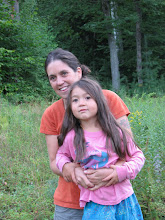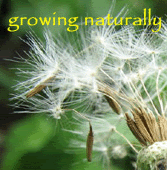Wild Cherry Bark Syrup -
I promised info on the Syrup we made this week. Soothing wild cherry bark is well-known for respiratory support in winter.....
Have you ever smelt a bag of freshly dried Wild Cherry Bark!! mmmmm! Not only is it beautiful the bark is a beautiful colour but the smell is great. I got my bag from Healing Spirit Herbs who are in upsate NY. Mathias and Andrea Reisen wild crafters extraordinaire!
How to Harvest: The bark is black, aromatic and rough, and naturally separates from the trunk. The bark is harvested in the autumn and the freshly stripped bark has the scent of almonds, which dissipates once carefully dried in the shade.
Wild Cherry/Choke Cherry (Prunus serotina) trees are common here in the North East. It is in the Rosaceae (rose) family, the same family as Apple Trees, Raspberries and Roses. Other common names: Chokecherry, Virginia Prune, Common Chokecherry, Wild Black Cherry, Black Cherry, Black Choke, Rub Cherry, Cabana Cherry, Rum Cherry. As herbalists we value the wild cherry for its inner bark which is a main ingredient in our wild cherry cough syrup. A native of North America, and grows from Canada to the Carolinas and Florida in the United States. It is a large, deciduous tree with a rough, reddish-brown bark and lustrous, dark green, oval, serrate leaves with pointy tips, and it bears small, delicate white flowers that bloom in April. The flowers are followed by one-seeded, purplish-red fruits that ripen in late summer and early autumn. The tree, which may reach a height of one hundred feet, can be found wild in moist woodlands and thickets, by riverbanks, or cultivated in well-drained, neutral-to-alkaline soil in sun, and it is prone to frost damage in a cold spring.
Its wood has been important in furniture making, and few people have not tasted cough drops and cough medicines made from Wild Cherry Bark. The fruit is also included in jellies, jams, wines, soft drinks and syrups. Because the Wild Cherry is so naturally sour, it has sometimes been called Chokecherry, and it is an aromatic, astringent, warming herb that is an important factor in herbal medicines.
Often commercial cough medicines are favored, colored, and sweetened as if containing actual cherry fruits, but it is the bark rather than the fruit that is more therapeutic and medicinal. The other vital ingredient is the local raw honey (see previos post)
Beneficial Uses:
Wild Cherry Bark supports the respiratory system.It is a fine expectorant that helps to loosen and expel phlegm from the throat, lungs and chest, and to clear bronchial tubes. It has been used for centuries to treat pulmonary conditions such as bronchitis, asthma, dry coughs, tuberculosis, scrofula and catarrh. Furthermore, its antitussive, cough controlling qualities have been beneficial in cases of whooping cough, nervous and chronic coughs, colds and influenza, and for that reason, it is, of course, familiar to all of us in cough drops and cough syrups.
As a tonic, Wild Cherry Bark has been used to restore and nourish the entire body and exert a gentle strengthening effect on all body functions. It is said to be particularly helpful in cases of convalescent debility and weakness.
Wild Cherry Bark is considered a mild sedative and has been used to calm irritation, diminish nervous excitability and alleviate nervous dyspepsia. It is said to be soothing to the nervous system and has been used to slow a nervous, rapid heartbeat and help a heart that is characterized by frequent, irregular beats or feeble pulse. The herb is also thought to be helpful for high blood pressure.
As a tonic for the digestive system, Wild Cherry Bark is believed to be very beneficial in cases of dyspepsia, poor digestion, gastritis, excess flatulence and general indigestion. Its astringent qualities may also help to relieve diarrhea, colitis and dysentery.
Wild Cherry Bark is reputed to have antibacterial, antiviral and a parasiticidal qualities and has been used to destroy and expel parasites and worms from the intestinal system.
As a diaphoretic, Wild Cherry Bark encourages sweat, and the increased perspiration helps to cool the body, bring down fever and expel toxins through the skin.
Wild Cherry Bark is believed to possess antioxidant properties that may be helpful in the fight against the oxidative damage to cells and tissue caused by free radicals. Its amygdalin content is believed to be the active constituent responsible for this effect.
Some of the constituents included in Wild Cherry Bark are starch, resin, tannin, lignin, essential oil, benzaldehyde, caffeic acid, kaempferol, p-coumaric acid, quercetin, scopoletin, ursolic acid, calcium, iron, magnesium, phosphorus, potassium and zinc.
Contraindications:
Pregnant and nursing women should not use Wild Cherry Bark, nor should people who are being treated for hypotension. The leaves and fruit pits contain poisonous hydrocyanic acid and should never be ingested.
r
skip to main |
skip to sidebar


Seasonal thoughts, gleanings and muddled musings
Welcome!

- Herbal Tonya here
- Grab yourself a cup of tea and enjoy.... I'm a 38 year old country living, crafty, homeschooling mama. I run a small herbal school out of our farm house.
my photos
Links to Things we're gonna makes
Books I am reading

Moon Phases
CURRENT MOON







No comments:
Post a Comment